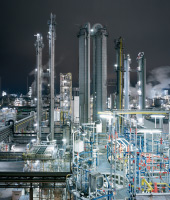Executive Board Statement on Business Development and on the Group’s Economic Position
Higher volumes in all five business divisions and improved polysilicon prices influenced operations at WACKER during 2014. In addition, high special income from terminated or restructured contracts with solar-sector customers had a positive impact on the earnings trend. On the whole, the Group met, and in some cases, outperformed its annual forecast with regard to all its key performance indicators.
Chemical sales continued to rise primarily due to volume gains. As a result of price pressure and higher raw-material costs, particularly at WACKER POLYMERS, the chemical divisions’ overall EBITDA remained slightly below the prior-year figure. At WACKER POLYSILICON, the agreement with the Chinese Ministry of Commerce on the import of polysilicon to China has given us legal certainty and planning security. Thanks to healthy demand, polysilicon production was running at full capacity for almost the entire year. In our semiconductor business, Siltronic continued to increase sales and EBITDA from quarter to quarter and, from October to December 2014, achieved a full-year EBITDA margin of nearly 17 percent. Much higher volumes more than compensated for lower semiconductor-wafer prices. Acquisition of the majority stake in Siltronic Silicon Wafer Pte. Ltd. and the measures taken by Siltronic to increase productivity and cut costs had a positive impact on earnings.
Personnel expenses rose both relative to sales and in absolute terms. There was a year-on-year decline in raw-material costs relative to sales and in absolute figures. Energy costs, too, were lower than our target figure. Depreciation, conversely, climbed against the prior year and reflected the target figure. The acquisition of the majority stake in Siltronic Silicon Wafer Pte. Ltd. increased our depreciation.
At € 1.95 billion, Group equity fell € 250.6 million against the prior year’s balance sheet date due to higher actuarial losses from the remeasurement of defined benefit plans. The equity ratio fell to 28.0 percent as a result. As expected, the Group’s net financial debt rose almost € 300 million, totaling € 1.08 billion as of December 31, 2014. As had been announced, capital expenditures of € 572.2 million once again remained below the level of depreciation. The net cash flow was much better than expected and, at € 215.7 million, almost double the prior-year figure.



